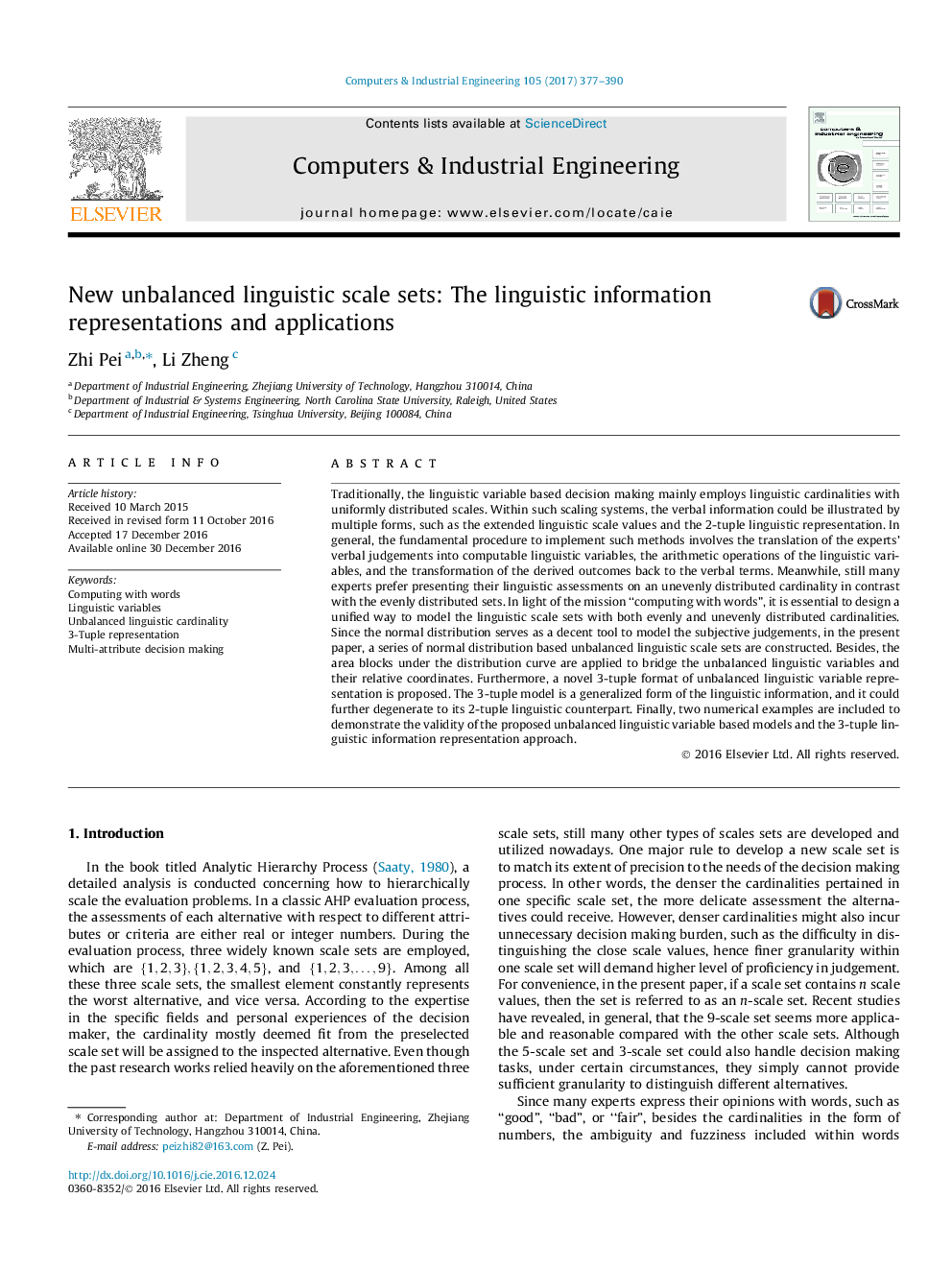| Article ID | Journal | Published Year | Pages | File Type |
|---|---|---|---|---|
| 5127730 | Computers & Industrial Engineering | 2017 | 14 Pages |
â¢A series of new unbalanced linguistic scales based on normal distribution.â¢A linguistic aggregation method based on area blocks under the distribution curve.â¢3-Tuple representation to accurately express the unbalanced linguistic variable.â¢Procedures to implement the 3-tuple method to unbalanced linguistic decision making.â¢Numerical examples with industrial background are demonstrated.
Traditionally, the linguistic variable based decision making mainly employs linguistic cardinalities with uniformly distributed scales. Within such scaling systems, the verbal information could be illustrated by multiple forms, such as the extended linguistic scale values and the 2-tuple linguistic representation. In general, the fundamental procedure to implement such methods involves the translation of the experts' verbal judgements into computable linguistic variables, the arithmetic operations of the linguistic variables, and the transformation of the derived outcomes back to the verbal terms. Meanwhile, still many experts prefer presenting their linguistic assessments on an unevenly distributed cardinality in contrast with the evenly distributed sets. In light of the mission “computing with words”, it is essential to design a unified way to model the linguistic scale sets with both evenly and unevenly distributed cardinalities. Since the normal distribution serves as a decent tool to model the subjective judgements, in the present paper, a series of normal distribution based unbalanced linguistic scale sets are constructed. Besides, the area blocks under the distribution curve are applied to bridge the unbalanced linguistic variables and their relative coordinates. Furthermore, a novel 3-tuple format of unbalanced linguistic variable representation is proposed. The 3-tuple model is a generalized form of the linguistic information, and it could further degenerate to its 2-tuple linguistic counterpart. Finally, two numerical examples are included to demonstrate the validity of the proposed unbalanced linguistic variable based models and the 3-tuple linguistic information representation approach.
Graphical abstractThese figures demonstrate the four new unbalanced linguistic scale sets in connection with the normal distribution. The Type-I cardinality focuses on the center area of the alternatives, thus suitable for general ranking; The Type-II emphasizes more on the lower end of the axis, therefore suitable for “worst selection scenario”; Type-III is suitable to the “award the best candidate” scenario; Type-IV tends to emphasize both ends of the alternatives.Download high-res image (126KB)Download full-size image
